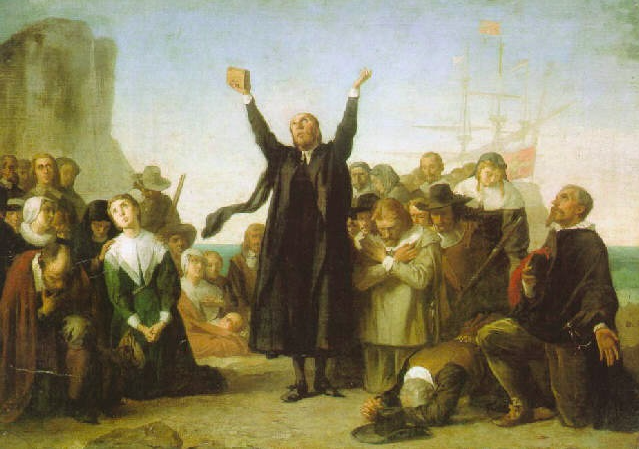In light of Indiana’s passage of an amended state-level version of the RFRA, Cornerstone asks this week’s contributors to address the following questions: To what extent should the religious freedom of small business owners protect them from having to act against their consciences? Would such protections open the door to wide-ranging and unjust discrimination against homosexuals, as many fear? What does a cost-benefit analysis reveal about RFRA legislation on the state level? What is at stake in Obergefell v. Hodges , and how does the case relate to state RFRAs? To what extent would a Supreme Court decision in favor of same-sex marriages impede free religious exercise?
By: Linda McClain
The swift “fix” of Indiana’s Religious Freedom Restoration Act (RFRA) to clarify that the law would “not create a license to discriminate” followed “storms of protest” from “the worlds of arts, business and college athletics” and threats of boycotts. To some, the highly publicized controversy had parallels to Arizona’s preemptive effort in 2014 to protect religious conscience, even though Arizona neither permitted nor recognized same-sex marriage. Former governor Frank Keating criticized the Arizona law (vetoed by Governor Jan Brewer), commenting: “This isn’t 1964 anymore. We’ve moved beyond that. If you open up your doors to the general public, you can’t pick and choose who are you are going to deal with.” Following criticism of the Indiana law, Governor Pence invoked his activities in the Civil Rights Movement, asserting that “the issue of discrimination has been an anthem throughout my life.”
The Indiana controversy suggests that many people relate the current battle over protecting conscience in the context of public accommodations to earlier opposition to ending racial segregation in public accommodations. One recurring reference point is, as Governor Keating’s quip suggests, 1964, when Congress passed, as part of the Civil Rights Act, the prohibition of discrimination in public accommodations. Another critical date is 1967, when the Supreme Court struck down Virginia’s ban on interracial marriage, in Loving v. Virginia. One of the most striking features of the recent state RFRA controversies is just how much these two reference points shape public discourse.
On the one hand, proponents of robust protection of religious conscience insist that the cases are wholly distinct: Today’s sincere religious believer who adheres to the one man-one woman definition of marriage has no resemblance whatsoever to an earlier era’s white supremacist who opposed integration in all spheres of life, particularly marriage. They also argue that changing civil marriage laws seriously threatens religious liberty and resist any comparison between past refusal to provide goods and services on the basis of race and present-day refusal on the basis of belief in “traditional” marriage.
Present-day arguments about robust protection of religious conscience sometimes downplay the extent to which opponents of racial integration and interracial marriage appealed to conscience and to the created order, natural law, and the like. Alternatively, those earlier views are treated as pretextual rather than sincere, as though opponents of racial integration and antidiscrimination laws were obviously bigoted, while objectors to changing marriage laws are clearly sincere, with motivations wholly distinct from bigotry and prejudice.
On the other hand, some supporters of marriage equality invoke the idea of “not being on the wrong side of history,” looking back to the examples of opposition to racial integration and interracial marriage. So too, many post-United States v. Windsor federal court opinions have sounded the theme of generational progress, or the gradual realization of constitutional ideals of liberty and equality over time. Loving v. Virginia ’s (1967) invalidation of a ban on interracial marriage often features as a prime example. One reason is that Justice Kennedy cited Loving in Windsor in support of the proposition that “state laws defining and regulating marriage, of course, must respect the constitutional rights of persons.” Federal courts upholding challenges to state marriage laws have repeatedly cited this “disclaimer” as enormously significant. They cite Loving not only as a vital precedent for the existence of the fundamental right to marry, which includes—they rule—the freedom to marry a person of one’s choice (regardless of race or gender), but also to point out the limits to appeals to history and tradition as a basis for an exclusionary definition of marriage.
An important issue in these appeals to moral progress is that of the temporal dimension of evaluation. For example, a federal district court judge, in striking down Florida’s ban on same-sex marriage, pondered the relationship between present-day views of anti-miscegenation laws and how future generations would view Florida’s ban: “Now, nearly 50 years [after Loving v. Virginia ], the arguments supporting the ban on interracial marriage seem an obvious pretext for racism; it must be hard for those who were not then of age to understand just how sincerely those views were held.” The judge continued: “When observers look back 50 years from now, the arguments supporting Florida’s ban on same-sex marriage, though just as sincerely held, will again seem an obvious pretext for discrimination. Observers who are not now of age will wonder just how those views could have been held.”
If yesterday’s sincere religious racist is viewed more critically today, of what help is that for sorting out present-day challenges to state marriage bans and to requests for religious exemptions in a new political order of marriage equality? Notably, while some post-Windsor cases address animus as a motivation for bans on same-sex marriage, in a number of other post-Windsor cases, courts do not find it necessary to characterize the motive for restrictive state marriage laws as rooted in bigotry or prejudice in order to find that such laws are constitutionally infirm. Ballot initiatives and constitutional amendments, courts point out, may reflect moral and religious convictions about what marriage is, but those laws are still infirm because they trench on the fundamental rights of citizens protected as part of Due Process liberty. A similar argument may be made about far-reaching RFRAs responding to civil marriage equality.
Relevant here is the theme of moral progress in the conclusion of Lawrence v. Texas, when Justice Kennedy states that those who ratified the Due Process Clauses of the Fifth Amendment and Fourteenth Amendment “knew times can blind us to certain truths and later generations can see that laws once thought necessary and proper in fact serve only to oppress,” adding, “As the Constitution endures, persons in every generation can invoke its principles in their own search for greater freedom.” Perhaps Kennedy might have avoided charges by the Windsor dissenters that he was branding supporters of the Defense of Marriage Act bigots had he observed (also echoing Lawrence ) that while people of good conscience disagree about the morality of same-sex marriage and about marriage’s purposes, declaring the liberty of each is the Court’s job, not mandating its moral code. In any case, themes of moral progress and constitutional evolution appear in numerous post-Windsor federal court rulings striking down state marriage laws.
Moral progress is also a prominent theme in antidiscrimination law. In a forthcoming article (“The Civil Rights Act of 1964 and ‘Legislating Morality’”) in the Boston University Law Review , I highlight how supporters of the Civil Rights Act of 1964 (CRA) argued that Congress should and must “legislate morality” by passing the CRA. Proponents also appealed to the need to close the gap between conscience—American principles and ideals—and unjust racial discrimination. Legislators and witnesses argued that the public would welcome a law that aligned with conscience. Opponents rejected the idea that Congress should legislate morality, but also argued that Congress was imposing a controversial morality upon the nation. They defended segregation as in keeping with God’s law, the natural order, and human nature.
Today, far from viewing civil marriage laws that allow same-sex couples to marry as in keeping with conscience, religious opponents invoke conscience to resist the reach of such laws lest they become complicit in what they view as immoral. At the same time, those who link marriage equality to the gradual realization of constitutional ideals and moral progress worry about allowing conscience-based objections to marriage equality to spill into acts of discrimination in the marketplace. How one evaluates the “fix” of Indiana’s RFRA may hinge on how one views conscience and morality at work in the controversy.
Linda C. McClain is Paul M. Siskind Research Scholar and Professor of Law at Boston University School of Law.
This piece was originally authored on May 5, 2015 for the Religious Freedom Project at Georgetown’s Berkley Center for Religion, Peace, and World Affairs.
THE RFI BLOG

Myths of Religious Nationalism in America and Abroad

France’s Olympic Hijab Ban Violates International Law And Exacerbates Tensions

RFI Briefs USCIRF on Lessons from 25 Years of U.S. Designating Religious Freedom Violators

Thought Police: Protecting the People from Prayer

A Religious “Delaware”: Establishing a State Haven for Religious Corporations
CORNERSTONE FORUM

Challenges to Religious Freedom in Iraq and the Critical Need for Action

Public Bioethics & the Failure of Expressive Individualism

Religious Liberty in American Higher Education

Scotland’s Kate Forbes and the March of Secularism


